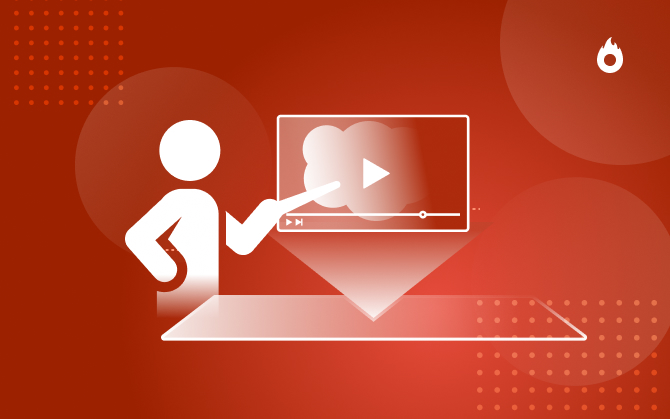
What Is Blended Learning?
Learn more about this educational model which combines traditional and distance learning.

What will we see in this post
Blended learning is an alternative teaching method that has emerged along with new educational technologies and it’s on the rise in various learning contexts.
Its main objective at first was to solve the problems of students who had difficulty following a traditional explanatory class due to lack of time or the distance from the educational institution.
However, gradually, people started realizing that this wasn’t the only advantage of blended learning, since students, as well as teachers, could benefit from distance education.
Do you wish to learn more about its main characteristics?
Read on!
VIDEO: Online teaching: How to create an online course? | Hotmart Tips
What is blended learning?
Blended learning, as the name implies, is an educational method that blends distance education with traditional teaching, providing positive aspects of each modality and maximizing the efficiency of overall learning.
This type of teaching can take place in two ways:
Disruptive model
Here, most of the classes are presented by using a DE platform, which provides the course in video format, allowing students to follow the subject wherever they are.
There may also be a few in-person meetings in which students and teachers meet to discuss a topic, carry out a special activity or even evaluations. However, this type of meeting doesn’t happen very often.
Sustained model
This is the most common, and perhaps the best-known type, especially because it’s widely used in higher education institutions.
The sustained model maintains the characteristics of traditional teaching and most classes are attended in person, but with the use of equipment to carry out online activities, both outside as well as inside the classroom.
Among the sustained models, there are 4 types that stand out more, which are:
1.The Station Rotation Model
In this model, the classroom is divided into workstations and each one has a specific function, but as a whole, they achieve a common goal.
In the station rotation model, each student (or group of students) works at different stations. After a while, the students switch places and work at each station for the entire process.
Since it’s a blended model, at least one of these stations has to be online.
2. Lab Rotation Model
This proposed model is carried out as follows:
The study group is divided into two categories:
- Students who will study the practical material first;
- Students who will study the theoretical part first.
Afterwards, both groups do the tasks to which they were assigned.
After a while, each group switches functions and those who studied the theoretical part will study the practical part and vice versa.
This way, everyone learns in the same way, always aiming at different modes of reaching the same conclusion. Therefore, the same topic becomes clear to both groups of students.
To illustrate this model, a common example is physical education classes.
Most physical education classes in a traditional school can be taught in practice and in theory. However, knowing the theory of a sport and its rules is as important as playing it and having the experience of how the rules work.
So, if you are teaching volleyball, you might have a group of students learning the techniques while the other group performs the practical activity, and the following week, you can switch the groups.
3. Individual rotation model
Individual rotation is a model in which an individual student works alone without necessarily working at all study stations.
For example:
If you are doing a course in electromechanics, you can choose only the areas focused on electricity. Therefore, the script is customized by the student, making the blended learning method even more independent.
4. Flipped classroom
The inverted classroom is a widely used method in universities.
Students study the subject that will be covered before the face-to-face classes. This way, they are better prepared when the professor presents the ideas of the topic to be studied.
The professor, on the other hand, questions some of the content’s preconceptions, observes if they are correct or not, and always offers information that is not included in the material that the students have read.
In addition, the exchange of experiences with the discussion of content studied before class is great so that students can develop independence and a unique way of thinking while obtaining knowledge.
Thus, it’s possible for students to choose the best way for them to learn.
Advantages of blended learning
Regardless of the blended learning model chosen, in all of these cases, the online environment provides students with autonomy and flexibility, in addition to allowing them to learn on their own and explore their capabilities, within possibility, outside the classroom.
The face-to-face environment, on the other hand, allows for a more personal exchange of experiences and communication in real time.
In other words, each process, whether online or face-to-face, serves to complement each other, further improving the ability to absorb knowledge.
But, besides the advantages for students, this teaching model also benefits the educational institution positively.
We’ll talk about the main advantages below:
For students
Autonomy
The main advantage for students, as we’ve already said, is that they become more independent in relation to learning and studying.
There are people who usually study on their own and even prefer to read textbooks because they have a hard time paying attention to a teacher teaching a class.
Moreover, with blended learning, it’s possible to develop students’ ability further in order to learn on their own, which awakens in them a characteristic of a researcher and who tries to solve their doubts independently.
This characteristic is great not only for studying but also for life, since it encourages people to take responsibility for their decisions.
Better use of the classes
It’s easy to see that students can benefit more from the classes because don’t only attend lectures, but search for knowledge before.
Therefore, it’s possible for students to learn even more, because, in addition to what was taught by the teacher, they’ll have continuous access to other types of materials, which are either recommended by the teacher or not.
Additionally, the discussion held afterwards in person allows students to observe the subject being studied in their own way.
Bringing school reality closer to each student’s daily life
In addition to the two advantages presented in the previous topics, students can also organize their studies in a manner that better suits their reality. In other words, they can adapt their study period to their everyday life.
It isn’t necessary to go to a classroom in person only to listen to the teacher talk and end the learning process right there. Blended learning exceeds these limits, since it is possible to study anywhere and at any time.
For the institution
Better use of the educator’s time
Not only students benefit from blended learning, educators also gain quite a lot.
Teachers who teach many classes a day might end up not having enough time to prepare as well as possible or even be unable to teach a class to a large number of students, since physical space is limited.
Since teachers will be creating the online classes, they can be used more than once, and therefore, teachers will have more time to devote to other activities or even to study and prepare new materials.
Lower costs
Reducing costs is an advantage both for the educational institution as well as for students.
Since a physical space won’t be needed every day for classes, teachers can make their course available for lower prices and can also use free online tools to help them create their material.
Therefore, the course’s sales value will also be lower, which helps students purchase this type of material.
VIDEO: Make better ONLINE COURSES with LESSON PLANS | Hotmart Tips
Invest in virtual classes for a blended learning strategy
As you may have noticed, blended learning is an excellent option for educational institutions that want to go beyond traditional education.
Allying technology to education is a way of spreading knowledge even more, in addition to putting schools in touch with the new reality of students, who are constantly online.
But don’t think that this alternative applies only for those already working with education.
Online courses are increasingly sought after and they cover topics in various areas. Therefore, as long as you have something to teach, you can work with this teaching model.
Do you want to learn more about why this is a good alternative?






